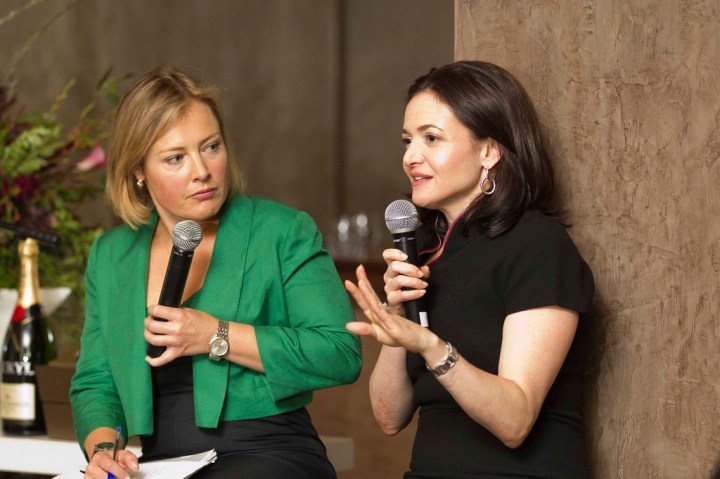
Equal Pay Day began 20 years ago by the National Committee on Pay Equity, and while there has been acknowledgment and improvement of the gender disparity in Silicon Valley, the tech industry still has a long way to go.
Women in tech make 3 percent less than men
Job recruiting startup Hired released new data on its findings of equal pay in Silicon Valley, and found that companies on average offer women 3 percent less than men for the same roles — some offering as much as 30 percent less. These jobs aren’t only in tech-related fields, but also in sales and marketing.
“Sixty-nine percent of the time, men receive higher salary offers than women for the same job title at the same company,” according to the data.
“I’m proud to share that at Facebook, men and women earn the same.”
Of course, larger companies are under greater scrutiny, and many of the big-names in tech do offer equal pay. Facebook and Microsoft disclosed information surrounding equal pay after facing pressure from an investment firm, Arjuna Capital. The firm filed a shareholder proposal in 2014 asking for nine companies, including
“We regularly review our compensation practices to ensure pay equity, and have done so for many years,” Facebook’s Head of Human Resources, Lori Goler, said in a Facebook post. “We complete thorough statistical analyses to compare the compensation of men and women performing similar work. I’m proud to share that at
Google told Digital Trends that its People Analytics team analyzes performance, compensation and promotion to ensure that there is no gender pay gap at Google.
“Since we set salaries based on the market rate of the job (rather than a person’s pre-Google salary), we find that, on average, women get larger pay increases than men when they join Google,” a spokesperson said.
While Facebook, along with Google’s parent company, Alphabet, say they offer equal pay, both companies have not disclosed salary data to the firm yet, according to the Wall Street Journal.
Women in the U.S. at Microsoft now earn 99.8 cents on the $1 earned by men at the same job title and level. And Microsoft went further and disclosed how much other ethnic minorities make compared to their Caucasian counterparts.
“Racial and ethnic minorities in the U.S. combined earn $1.004 for every $1 earned by their Caucasian counterparts,” Microsoft’s Executive Vice President of Human Resources, Kathleen Hogan, said. “Breaking it down even further, African American/black employees are at $1.003; Hispanic/Latino(a) employees are at 99.9 cents; and Asian employees are at $1.006 for every $1 earned by Caucasian employees at the same job title and level, respectively.”
It’s still mostly an all-boys club
But offering equal pay is the easy part — what about the number of women who are actually working at these tech companies?
The Menlo Park company provided an employee breakdown last May, which shows that only 16 percent of Facebook’s global tech workforce comprises of women with tech-related careers. Microsoft’s also only has a small group of women in its tech workforce — 16.9 percent, as opposed to the other 83 percent that are men.
Based on its 2015 data, only 18 percent of Google’s tech jobs are held by females. And Apple is hardly any better — the Cupertino company’s tech workforce is 22 percent female, according to its 2015 data.
“One of the big reasons why today we have this issue is that there aren’t a lot of women in the field today.”
One thing’s for sure — these industry leaders have realized the gender disparity in their workforce and have spoken out about it.
“We believe in equality for everyone, regardless of race, age, gender, gender identity, ethnicity, religion, or sexual orientation,” Apple CEO Tim Cook said in a diversity report. “That applies throughout our company, around the world with no exceptions.”
Facebook’s Mark Zuckerberg has repeatedly mentioned the importance of a more diverse workplace, but also how more women will help teams perform better, according to CNN.
“It’s this problem because it’s not even clear where you would start attacking it,” Zuckerberg said in a 2014 Q&A. “You need to start earlier in the funnel so that girls don’t self-select out of doing computer science education, but at the same time, one of the big reasons why today we have this issue is that there aren’t a lot of women in the field today.”
That was in 2014 — and Facebook’s most recent data from less than a year ago only improved by 1 percent.
While Google’s disclosure of diversity in its workplace in 2014 may have inspired a wave of companies like Apple and Facebook to follow suit, it’s equally important for these industry leaders to follow through with actions.
Last year, companies like Google and Intel announced new initiatives to help create a more gender-balanced workplace. Google pledged $150 million and Intel created a $300 million fund for the next five years.
We’ll have to see how these initiatives play out, but hopefully a higher awareness will have more companies hiring more women and other minorities in tech-related fields, while offering the equal pay for equal work.



